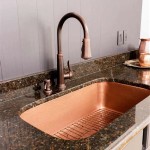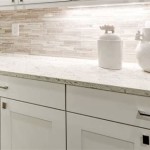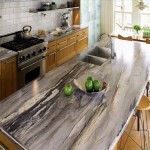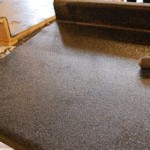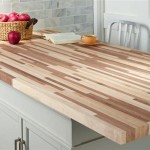How To Fix Scratches On Countertops
Countertops are integral to any kitchen or bathroom, serving as both functional workspaces and aesthetic elements. However, daily use inevitably leads to scratches, diminishing their visual appeal and potentially compromising their integrity. Understanding how to address these imperfections is crucial for maintaining the longevity and beauty of various countertop materials.
The approach to fixing scratches on countertops varies significantly based on the material. Granite, quartz, laminate, wood, and acrylic surfaces each require specific tools and techniques. Attempting to use a universal method can cause further damage, necessitating professional repair or even replacement. Therefore, identifying the countertop material is the initial and most important step.
This article provides detailed instructions on how to repair scratches on different types of countertops, focusing on effective methods and appropriate materials to restore their original condition. Safety precautions and preventive measures will also be addressed to minimize future damage.
Fixing Scratches on Granite Countertops
Granite is a durable and popular countertop material, valued for its resistance to heat and scratches. However, even granite can sustain superficial scratches from sharp objects or abrasive cleaners. Minor scratches can often be addressed with a simple cleaning and polishing process. Deeper scratches may require professional intervention, as granite is a porous material and can absorb stains more easily with compromised sealant.
Begin by thoroughly cleaning the affected area with a pH-neutral granite cleaner and a soft cloth. Ensure all debris and residue are removed. Dry the surface completely before proceeding. Evaluate the scratch’s depth. If it is shallow and barely noticeable, a granite polishing compound can be used.
Apply a small amount of granite polishing compound to a clean, soft cloth. Gently rub the compound into the scratch using a circular motion. Apply moderate pressure, working the compound into the granite for several minutes. Wipe away any excess compound with a clean, damp cloth. Check the result and repeat the process if necessary. If the scratch persists, a more aggressive polishing may be required, potentially involving diamond polishing pads used with water. This method necessitates considerable skill to avoid damaging the surrounding area, so it’s often best left to professionals.
For deeper scratches, a granite repair kit containing epoxy or resin specifically formulated for granite may be the best solution. These kits usually include a color-matching component to blend the repair seamlessly with the existing countertop. Follow the manufacturer’s instructions carefully, as these products often have specific mixing ratios and curing times.
After the repair compound has cured completely, carefully sand the area with fine-grit sandpaper (e.g., 400-grit, then 600-grit). Start with the coarser grit to level the repair to the surrounding surface, then use the finer grit to smooth it out. Polish the repaired area with granite polishing compound to restore its shine. Finally, reseal the granite surface to protect it from future stains and damage. Use a high-quality granite sealant and apply it according to the manufacturer's direction. This crucial step prevents moisture and other substances from penetrating the repaired area.
Repairing Scratches on Quartz Countertops
Quartz countertops, composed of ground quartz and resin, are known for their durability and non-porous nature. This makes them more resistant to staining than granite, but they are still susceptible to scratches. Minor scratches on quartz countertops can often be addressed with DIY methods, while deeper scratches may necessitate professional repair.
As with granite, the first step is to thoroughly clean the affected area with a mild detergent and water. Remove any dirt, grease, or debris. Dry the surface completely before proceeding. Examine the severity of the scratch. For superficial scratches, a quartz polishing compound can be effective.
Apply a small amount of quartz polishing compound to a clean, soft cloth. Rub the compound into the scratch using circular motions, applying light to moderate pressure. Continue polishing for several minutes, then wipe away any excess compound with a clean, damp cloth. Evaluate the result. If the scratch is still visible, repeat the process. Be cautious not to over-polish one area, as this can create a dull spot. Maintaining even pressure and consistent polishing is essential.
For deeper scratches, a specialized quartz repair kit may be required. These kits typically contain a resin or epoxy filler designed to match the color and texture of the quartz countertop. Follow the kit’s instructions meticulously. The process usually involves cleaning the scratch, applying the filler, allowing it to cure, and then sanding and polishing the repaired area.
When applying the filler, use a plastic spreader or putty knife to ensure it fills the scratch completely and is level with the surrounding surface. After the filler has cured, carefully sand the area with fine-grit sandpaper (400-grit and then 600-grit) to smooth it out and blend it with the surrounding surface. Polish the repaired area with quartz polishing compound to restore its shine. Ensure that the repaired area blends seamlessly with the rest of the countertop.
Although quartz is non-porous, sealing the repaired area can provide an extra layer of protection, especially if the repair involved deeper sanding that may have slightly altered the surface structure. Apply a quartz sealant following the manufacturer’s instructions. Regular cleaning with non-abrasive cleaners and the use of cutting boards will also help prevent future scratches.
Addressing Scratches on Laminate Countertops
Laminate countertops, composed of layers of plastic laminate bonded to a particleboard core, are a cost-effective option. However, laminate is relatively susceptible to scratches, chips, and heat damage. Repairing scratches on laminate countertops can be challenging, and the effectiveness of the repair depends on the scratch’s severity and the color/pattern complexity of the laminate.
Begin by thoroughly cleaning the scratched area with a mild detergent and water. Ensure all dirt and grease are removed. Dry the surface completely. Evaluate the scratch. If it is a shallow surface scratch, a laminate repair paste or marker may be sufficient.
Laminate repair pastes and markers are available in a variety of colors to match different laminate finishes. Select a color that closely matches the countertop. Apply the paste or marker to the scratch, following the manufacturer’s instructions. For pastes, use a plastic putty knife to fill the scratch completely and level it with the surrounding surface. For markers, carefully color in the scratch, ensuring the ink fills the entire area. Allow the repair material to dry completely.
After the repair material has dried, use a clean, soft cloth to buff the area gently. This will help blend the repair with the surrounding surface. If necessary, use a very fine-grit sandpaper (e.g., 1200-grit) to lightly sand the repaired area. This should be done with extreme caution, as excessive sanding can damage the laminate and remove the printed pattern. Polish the area with a laminate polishing compound to restore the shine. This step is crucial to concealing the repair and creating a uniform look.
For deeper scratches or chips, a laminate repair kit containing a filler and a color-matching solution may be required. These kits typically involve mixing the filler with a hardener, applying it to the damaged area, and then applying the color-matching solution to blend the repair with the surrounding laminate. Follow the kit’s instructions very carefully. These types of repairs are more involved and require more precision.
Unfortunately, extensive damage to laminate countertops is often difficult to repair invisibly. Depending on the extent of the damage, replacing the entire countertop or a section of it may be the most practical solution. Preventative measures, such as using cutting boards, trivets, and avoiding abrasive cleaners, are key to extending the life of laminate countertops. Because laminate is inherently delicate, exercise caution.
Repairing scratches on countertops is a task that necessitates careful consideration of the material, severity of the damage, and the availability of the proper tools and techniques. When in doubt, consulting a professional is highly recommended.

How To Fix Scratches On Corian Countertops Easy Diy Tutorial

How To Fix Scratches On Corian Countertops Easy Diy Tutorial

Granite Countertop Scratch Repair The Ultimate Diy Guide N Save Diamond Tools

Top Polishing Demo Removing A Scratch

Removing Scratches From Laminate Countertops

Watch How I Repair This Scratch In My Countertop Homes

3 Ways To Remove A Scratch From Laminate Countertop Wikihow

Repair Kitchen Countertop Scratches

How To Fix Scratches On Corian Countertops Easy Diy Tutorial

3 Ways To Remove A Scratch From Laminate Countertop Wikihow
See Also


